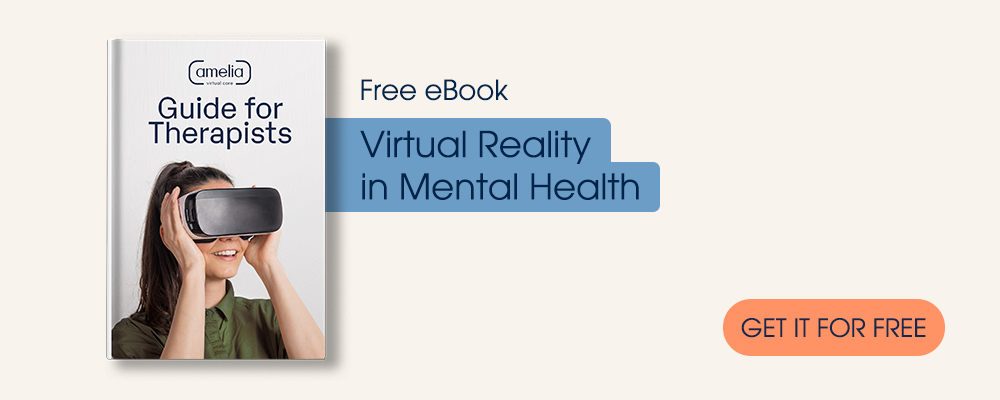How to manage Acrophobia: The Fear of Heights
Acrophobia is the second most common phobia after animal phobias. With such frequency, how we can we work on it effectively and improve patients’ quality of life? We take a glance at the disorder and present how virtual reality could be key in care. Acrophobia is a phobic anxiety disorder that plagues many people worldwide. Originating from the Greek words akros (peak or summit) and phobos (fear), the isolated, irrational fear of heights affects as many as one in 20 people and can cause much distress.1The idea of climbing ladders or approaching balconies in high-rise buildings becomes overwhelming. It can impede a person from performing daily actions. However, different acrophobia treatment options are available. Among such therapeutic approaches, there is virtual reality (VR). In today’s post, we take a brief look at acrophobia and its many facets and speak about the much-collected evidence that supports the use of VR therapy in this disorder.
How does acrophobia (the fear of heights) classify as a mental disorder?
Acrophobia is a specific phobia belonging to classification schemes of the International Classification of Diseases (ICD-10) and Diagnostic and Statistical Manual of Mental Disorders (DSM-V).2The characterizing, anticipatory fear underlying acrophobia distinguishes the disorder from physiological height vertigo. The objective risks and even avoidance of heights set the phobia on the most severe end of the continuum and includes induced panic attacks. Interestingly, multiple studies have suggested that anxiety and fear of falling may be responsible for shifts in behavioral actions, like a more cautious gait (walk). In the United States, national epidemiological surveys approximated a lifetime prevalence rate of isolated phobia of heights at 5.3%.3 This percentage would then make acrophobia the second most frequent isolated phobia following animal phobias.
What causes acrophobia? Is there a possible symptom cascade?
Acrophobia arises in response to the fear of falling off or falling down from an elevated height. However, more specifically, what perhaps makes acrophobia symptoms so-called “dynamic” is the vicious circle attributed to the disorder.In other words, in a person’s attempt to maintain postural stability, the anxiety felt by a person triggers co-contraction of the anti-gravity muscles (to contribute to an upright, balanced form). This then leads to both an increased sensitivity of sensorimotor balance reflexes and strict control of body sway, which ironically worsens subjective imbalance and heightens the initial anxiety. Indeed, posture and sensory cue processing factors are significantly more present in people with acrophobia than those without the condition.
Is there a cure for acrophobia? What treatments are available?
Various acrophobia treatment options are available.Different studies have demonstrated that exposure could help patients with acrophobia handle the fear of heights more effectively. This could encompass behavioral therapy and its sub-form, cognitive-behavioral therapy. However, another approach like guided mastery may prove more effective than regular exposure in itself. Guided mastery entails exposure therapy, yet with the added benefit of guidance or direction from the therapist. This is relevant because such a line of therapy could complement even other, more breakthrough alternatives, like virtual reality.
What role does VR therapy play in acrophobia?
Virtual reality has become a morepromising tool managing phobias of all sorts. Its uniqueness stems from the fact that various studies have demonstrated a comparable effectiveness to cognitive-behavioral therapy and therapists maintain full control of exposure variables. Furthermore, VR therapy simulates real-life settings and can induce physiological responses, like an increased heart rate or sweat, without increasing objective risks. Multiple studies have highlighted that in virtuo exposure is as effective as in vivo. A publication entitled “Review of Four Studies on the Use of Physiological Reaction as a Measure of Presence in Stressful Virtual Environments” showed that virtual reality could induce anxiety even in adults who did not have acrophobia but were in a height situation.4
Does VR technology by Amelia Virtual Care work on acrophobia?
Yes, it does. Amelia Virtual Care offers different virtual reality settings that transport individuals to heights located in Barcelona, New York, and more. In these scenarios, those with acrophobia will find themselves in a glass elevator or overlooking the plenitude of compact buildings. Due to the well-created functionalities of such technology, mental health professionals can adjust the settings based on patients’ responses and reporting. The controlled nature of VR therapy welcomes a more open readiness on behalf of patients to take a more active step in receiving care and improving their quality of life. If you’re not sure about how to integrate VR technology in your clinical practice, we invite you to try a demo session. We can answer any questions or concerns you may have, while show how such settings and features could resonate well with your clients.
Other articles that might interest you:













